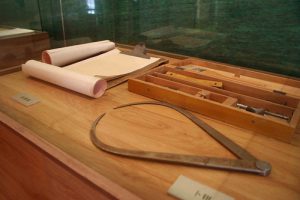 With the recent developments in the excavation of Qin Shi Huang’s mausoleum, and the discovery of more terracotta warriors, not to mention the ground-breaking discoveries of the tomb of Cao Cao, and the 100,000-year-old fossil, it’s an exciting time for archaeologists in China.
With the recent developments in the excavation of Qin Shi Huang’s mausoleum, and the discovery of more terracotta warriors, not to mention the ground-breaking discoveries of the tomb of Cao Cao, and the 100,000-year-old fossil, it’s an exciting time for archaeologists in China.
The past decade has certainly been a good one for Chinese archaeology. So good in fact, that one might say it’s been a golden age. To Zhao Zhijun, a Chinese archaeologist working in Beijing, this is no overstatement.
“We know the best archaeological methods, our research is open now, we have plenty of funding, and we have an endless amount of work to do,” he said. “If this isn’t a golden age, then what is?”
Golden age not, Chinese archaeology has been experiencing a transformation, with native scholars like Zhao enjoying the changes. As China itself continues to develop at a rapid rate, the country’s archaeology field has also followed suit and seen its own growth in terms of in terms of research, academic culture and just plain interest.
Each year now, new discoveries in China are being made almost daily — this past decade the country’s archaeologists have been averaging around 270 finds annually, according to the Chinese archaeology almanac.
At the same time, more college graduates are also exiting from the nation’s archaeology departments than ever. Even on an international level, joint projects between Chinese and overseas archaeologists have seen their own expansion, turning from rare partnerships to full-fledged exchanges.
It’s an exciting time for the field said Gary Crawford, an archaeologist at the University of Toronto at Mississauga:
“Frankly, in my career I’ve never seen anything like it,” he said. “Books are being translated, students are winning international fellowships, projects are well under way and scholars recognize the need to explore and learn new theoretical approaches.”
The First Steps of Chinese Archaeology
 To understand how archaeology in China became what it is today, we need to look back to a century ago when Chinese scholars were just beginning to grasp the field. For those early scholars, figuring out the facts from the myths of Chinese history was not always easy to discern; the main source for the earliest periods of history being ancient written texts that had been passed down through the centuries. Finding out more was generally left up to speculation.
To understand how archaeology in China became what it is today, we need to look back to a century ago when Chinese scholars were just beginning to grasp the field. For those early scholars, figuring out the facts from the myths of Chinese history was not always easy to discern; the main source for the earliest periods of history being ancient written texts that had been passed down through the centuries. Finding out more was generally left up to speculation.
“Our understanding of Chinese history at the time was very simple,” said Chen Xingcan, an archaeologist with the Institute of Archaeology of the Chinese Academy of Social Sciences in Beijing.
Xingcan, who has written books about the field’s history, said that while these ancient texts chronicled Chinese history over a 5,000 year period, the most detailed descriptions only reached back to half that time span.
“So we didn’t really quite understand the ancient times. That’s why I think there was such a big interest in it for those early scholars,” he said. “There were even some who said the only road we had (to better understand the past) was archaeology.”
Chinese scholars had already established a history of collecting antiques and studying ancient inscriptions. But they had yet to develop practices related to archaeological excavation work. Laboring with one’s hands was seen as work done by the lower classes, and not that of intellectuals.
By the early 20th century, however, the academic culture of China was going through ground-breaking changes. The fall of the Qing Dynasty in 1911 had ended Chinese dynastic rule, and Western countries had established their own spheres of influence over the country. These conditions helped bring about new ideas and thought, like the field of archaeology.
During this time, foreign archaeologists were also coming to China. Torii Ryuzo, a Japanese scholar, was one of the earliest, performing investigations in the country’s Liaodong peninsula in 1895. Among those first foreign archaeologists, Swedish scholar Johan Gunnar Andersson was amongst the few who left the most lasting legacies.
Being a trained expert in archaeology, Andersson went to work for the newly established Chinese government in 1914. Though he was recruited for geological needs, with his duty to offer advice about mineral deposits in the country, Andersson would also engage in archaeological work during his time in China. This led him, in 1921, to carry out the first excavation of a prehistoric site in China at what is called Yangshao Village in China’s Henan province. The site was later dated to be around 5,000 years old.
Due to this discovery, the study of ancient Chinese history had reached a turning point: instead of being left up to speculation, the country’s past could actually be uncovered. Andersson himself would go on to discover the Peking Man site at Zhoukoudian, where fossils of early man were later found. He wrote (modestly) of his archaeological experiences in China: “By a series of fortunate circumstances I was on several occasions the pioneer.”
These finds would also give a new generation of Chinese scholars exposure to the field of archaeology. Already influenced by Western education, they would work alongside Andersson and other foreign archaeologists while honing their own methods and understanding.
“When Andersson came, there were already Chinese geologists,” Chen Xingcan said. “So Chinese scholars were already using their hands at this time. These were the first Chinese who had studied an entirely different field of academics. Archaeology would come later.”
Anyang: School of Chinese Archaeology
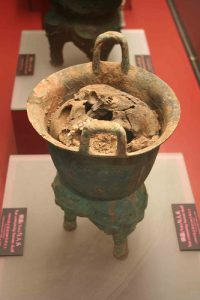 The Shang Dynasty, lasting from 1600 to 1046 BC, was one of China’s most ancient ruling states. Now the dynasty’s artifacts are some of the most commonly displayed in the country’s museums. But before archaeology, scholars weren’t even sure the dynasty really existed.
The Shang Dynasty, lasting from 1600 to 1046 BC, was one of China’s most ancient ruling states. Now the dynasty’s artifacts are some of the most commonly displayed in the country’s museums. But before archaeology, scholars weren’t even sure the dynasty really existed.
In 1928, however, a major breakthrough occurred when a capital of the Shang Dynasty was discovered in Anyang, a city in central China. The man to lead the excavation was Li Chi, who is now considered the father of Chinese archaeology
A native-born Chinese, Li Chi was educated in Harvard, where he received a PhD in archaeology. After finishing his studies, he then returned to China to help lead a Chinese national research organization as its Director of Archaeology.
“He was the first Chinese archaeologist who started to use scientific excavation methods,” Chen said. “But his most important contribution was Anyang. His whole life he could never escape his connection to Anyang.”
When the first scientific diggings at the site occurred in 1927, headway had already been made in proving the existence of the Shang Dynasty. Previous scholars had discovered that the ancient bones being used by Chinese pharmacists were in fact written with inscriptions from the Shang Dynasty. These bones, now referred to as Oracle bones, were used to trace the location of a Shang Dynasty city at Anyang.
From 1928 to 1937, Li Chi would work on excavating what is called the Yin ruins at Anyang. During that time the archaeology team faced threats from bandits and harsh conditions. But the ensuing work proved to be monumental, uncovering tombs, palaces and artifacts of the former Shang Dynasty capital, making it one of the most significant finds in Chinese history.
The outbreak of World War II, however, would put excavation work at Anyang, and archaeology work in China, on hold. As for Li Chi, he would eventually be forced to flee to Taiwan, where he would work to establish Chinese archaeology research on the island.
Despite his absence, excavations at Anyang would be continued by the next generation of archaeologists, and the generations to follow. This has made Anyang not only important for the study of Chinese history, but also as a training ground for the country’s archaeologists. (Even today new discoveries are being made at the city; by 1999, archaeologists had traced the city wall to another major Shang Dynasty settlement nearby.)
“In fact, in the first 50, 60 years of Chinese archaeology, all the archaeologists trained had some connection with Anyang,” Chen Xingcan said. “Anyang was like a Chinese field school for archaeology.”
Archaeology Under a New China
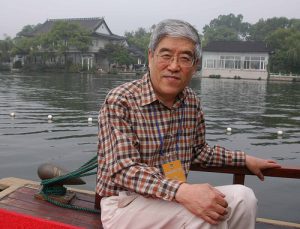 With World War II over, and the founding of the People’s Republic of China in 1949, archaeology in the country could once again move forward.
With World War II over, and the founding of the People’s Republic of China in 1949, archaeology in the country could once again move forward.
Even though China was a poor and under-developed country at the time, new construction projects meant a need for more archaeologists to do field work. The country’s Institute of Archaeology saw its ranks grow as a consequence, with the number of researchers exploding from 20 at the start of the 1950s to 300 by the end of the decade.
Various different influences started to shape the field. On one end of the spectrum were the archaeologists who had been trained in Western techniques; on the other were scholars who subscribed to Chinese traditional methods of historical record-keeping. But with the rise of Communist China, new Soviet and Marxist approaches were also being introduced into the country, becoming the prevailing framework for the field.
Liu Qingzhu, a Chinese archaeologist with the country’s Institute of Archaeology, started his career in 1962 when he began studying the field at Peking University. Though archaeology was growing, Liu noted that there were only two universities offering it as a major.
“At the time, archaeology was a small field,” he said. “When I was attending at Peking University, there were no more than a dozen people in my major. In my year, there were 18 students.”
Archaeology in China would also face its own set of challenges and restrictions as the country’s politics loomed over the field. Working with certain Western countries like America was banned. Instead, China favored exchanges with other Communist nations. Archaeologists also had to be more careful about their conclusions; arguing that a chariot relic found in China had some connection to other Western cultures was considered taboo.
Eventually archaeology in the country would once again be put on hold as bigger events forced it to take a back seat. The launching of China’s Cultural Revolution in 1966 meant that research in academic subjects were suspended as entire colleges shut down.
Qingzhu himself would graduate from Peking University in 1967, only to head off to do farm work and hold a teaching job during this period. But his career and the field of archaeology would be revived in 1972, with the gradual decline of the Cultural Revolution
“My career in archaeology was delayed,” Qingzhu said. “But at that time, everyone’s career was delayed.”
The Opening of Chinese Archaeology
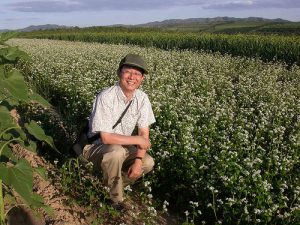 By the late 1970s and early 1980s, the start of China’s economic reforms would pave the way for a new era in Chinese archaeology. As the country’s economy modernized, more government funding went toward archaeology. The pace of building construction, which grew even quicker, meant more archaeologists were not far behind, investigating affected historical sites and performing salvage work.
By the late 1970s and early 1980s, the start of China’s economic reforms would pave the way for a new era in Chinese archaeology. As the country’s economy modernized, more government funding went toward archaeology. The pace of building construction, which grew even quicker, meant more archaeologists were not far behind, investigating affected historical sites and performing salvage work.
“Every province started to create their own archaeology department,” Chen said. “These departments all have 100 people. Even certain cities will have their own research center. Before the 1980’s, you wouldn’t have this.”
The new economic reforms would also mean the opening of China to the rest of the world. Now for the first time Chinese archaeologists could begin inviting their counterparts in the West to come to the country.
Chen said that these first exchanges during the early 1980’s were revelatory. Before, Chinese archaeologists had little knowledge of what overseas archaeologists were studying and what techniques they were using.
Of those early meetings with American archaeologists who came to China in the 1980’s, Chen said: “All these things that they were bringing with them were new. We didn’t know about them. But we were so happy and excited to see them.”
“The economic reforms and the open door policy gave us a new opening,” he added. “Now we knew what was going on in foreign countries, we also knew what we were lacking.”
Chinese archaeologists also began to make visits abroad, eventually leading to a new generation of students to study archaeology in overseas schools. In turn they would bring back and introduce new techniques for use.
Zhao Zhijun was one of these students; after earning a degree in archaeology at Peking University, he then went to study the field at the University of Missouri-Columbia in America during the early 90’s. Zhao would then return to China to bring back archaeobotany methods — a relatively new science — to the country.
But these first international exchanges also set off debates within archaeology circles in China. Questions swirled around whether archaeology in China had fallen behind, and if they should begin adopting the newest Western techniques. Even today, Chinese archaeologists hold different views on how they saw their own discipline at the time: some feel that Chinese archaeology had already done good work and was on the right course, while others believe that the field needed to catch-up.
“There was a hesitation and a lot of deep thinking about what to do. It was a struggle. Like we were stuck and trying to get out,” Zhijun said. “So there was a debate. But it was very healthy. And there were no intense political overtones.”
“In the end, we became aware of the things Chinese archaeology could use, and what we couldn’t” he said. “After we overcame this period of hesitation, Chinese archaeology finally started to see some major development.”
Chinese Archaeology Today
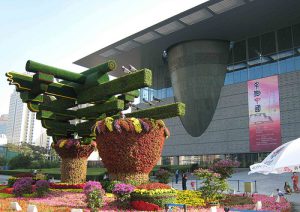 During the early 90s, some of the first joint research projects between China and overseas archaeologists were taking place. But they were still considered a rarity, with only a handful in progress at one time. Now such joint research projects number in the dozens, according to Rowan Flad, an archaeologist with Harvard University who works in China.
During the early 90s, some of the first joint research projects between China and overseas archaeologists were taking place. But they were still considered a rarity, with only a handful in progress at one time. Now such joint research projects number in the dozens, according to Rowan Flad, an archaeologist with Harvard University who works in China.
Given how the country’s archaeologists have opened themselves to other countries, Flad said: “These projects are becoming more and more possible.”
In 1999 Flad began working in China as an archaeologist studying the origins of complex societies. This past decade alone Flad said, “There have been tremendous changes.”
“In some regards Chinese archaeologists are on the forefront of scientific archaeology,” he said. “A lot of the techniques that were developed in the West and tested there and then refined are now being adopted relatively quickly in China.”
Tourism and a greater commitment to preserve the country’s national history have also given a boon to Chinese archaeology. But Flad also added that confidence is also playing a factor in the field’s growth.
“As Chinese archaeologists have grown more confident that their work is up to the standing of overseas archaeologists, the field has opened to more collaboration and led to this growth,” he said.
Native archaeologists have also noticed the growth, saying that the field is “hot” and garnering interest from the common people, with new books and TV programs publicizing the latest finds. Long-time archaeologists like Liu can also point to the larger number of students studying archaeology. Over these past decades, the field has expanded to more than a dozen different colleges. In 2007, more than 250 college undergraduates in China finished school with majors in archaeology, one of the highest figures so far.
Along with the improvement in archaeology technology, archaeologists also say the academic culture in archaeology is far more open now when compared to the period before 1980.
“Back then there were just some things you couldn’t say,” Chen said. “But now there are all kinds of explanations and more and more views.”
One of the most popular topics archaeologists in China are trying to answer concerns the origins of Chinese civilization. Dubbing China’s Yellow River as the “cradle of Chinese civilization” is at least debatable considering how archaeologists have discovered ancient settlements further away at different regions of the country. How these cultures formed and influenced one another is the focus of many ongoing investigations across the country.
But even as the economy helps drive Chinese archaeology, that same development has also threatened the country’s cultural heritage as construction projects have destroyed historical sites. In response, the Chinese government, which provides the bulk of archaeology funding in the country, also puts money toward cultural preservation and salvage projects. Real estate developers are also forced to allocate funds toward archaeology work on each new construction site they build on.
These factors together have led to a need for more archaeologists. Some experts say the country doesn’t have enough archaeologists, although the flip-side is that there is plenty of work available for archaeologists already in the field.
Though Chinese archaeology is experiencing positive changes, this doesn’t mean that research has gotten any easier. Sanitary conditions and transportation can be obstacles in areas of the country that remain under-developed. At the same time, new technology and methods have also placed more demands on archaeologist to produce sound work Liu said.
“In my own opinion, the government has given us a lot of support. Society values our work. The conditions are better,” Liu said. “But on another side of things, the pressure is very high.”
Overseas archaeologists like Flad say it’ll be up to history to decide whether or not the field is experiencing a golden age. Still, Flad agrees, “It is a great age.”
“I think it is a beginning of an ever-developing phase,” he said, adding, “and hopefully it will be quite long.”
